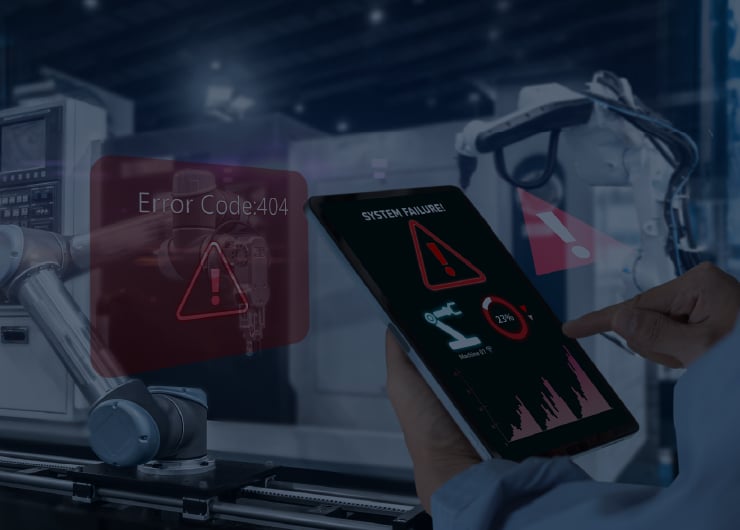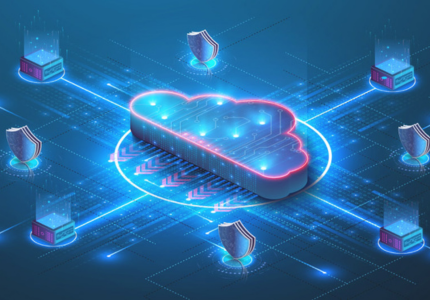When you’re working on an IoT solution, choosing who to work with is a big decision. You need confidence that the service you will get will be reliable, scalable and secure. One of your biggest priorities should be preventing outages, so you will want reassurance that the solutions provider is an expert in that.
The IoT can be complex - there are rules and regulations to understand, risks to mitigate and legacy technology shutdowns to navigate - how do you choose a partner who will guide and support you? Here is our list of questions to consider when choosing a solution provider.
How do you maximise uptime?
Outages are the stuff of nightmares. They hit revenue, can trigger regulatory investigations, damage corporate reputations and cause customers pain. If your IoT application is part of critical national infrastructure, or supports patient care, consequences can be even more serious.
No-one expects to rollout a connected solution and simply hope it will stay online, but what do you need to know from your prospective solutions provider? First off, what the service level agreement (SLA) is, then how continuity of service is ensured in the face of a natural disaster, power or network outage or cyberattack. You will also want to ask about disaster recovery, including how often the plan is tested, and if data centres are geographically dispersed for resilience.
Your guide to network resilience
There is much more to maximising IoT uptime.
Discover how to achieve high availability and cyber-resilience
Download guide
How do you manage network infrastructure?
Network infrastructure is at constant risk. It is vulnerable if sufficient safeguards aren’t in place, and that could jeopardise your IoT. Check how your provider ensures security of its communications infrastructure. Ask about the encryption of data in transit and at rest, network segmentation, firewalls, intrusion detection and prevention, security patching and updates and access and quality controls. What protections are in place to mitigate Distributed Denial of Service (DDoS) attacks and how often are vulnerability assessments or penetration testing carried out?
How do you secure the IoT and monitor and respond to incidents?
The IoT must be secure to be resilient and a lot of that is down to how you and your solutions provider defend against cyberattacks. However, a comprehensive security model must also include measures to detect and react to incidents. Ask about security incident mitigation, an incident response plan, how devices are monitored and what kind of alerts you would receive in the event of a breach or outage. You will want to know what the policy for reporting security incidents or breaches to customers is and if the company has dedicated security operation centres for 24/7 monitoring of potential threats.

What is your data protection strategy?
All aspects of transmitting, storing, backing up and accessing data should be carefully considered, along with data privacy and protection regulation. Your IoT partner should be able to tell you how it encrypts, secures, backs up and restores data; how it handles sensitive data and what its retention policy is.
You will want to know where data is stored, how storage complies with data residency requirements and how it remains within regulatory borders during transit. Ask about cross-border data transfers and ensuring compliance with data protection laws in different regions.
Naturally, you will need to know what measures are in place to prevent unauthorised data access and how customer requests related to data subject rights are fulfilled.
Do you comply with standards and regulations?
IoT regulation evolves all the time so compliance can seem like a daunting task. Try not to approach it as a tick-box exercise though. Regulations and standards provide a framework you can use to help make your IoT deployment resilient.
You’ll want your solutions provider to help you understand, and abide by, the many rules that apply. Start by asking if the company is certified under any industry standards, such as ISO/IEC 27001, CRA/NIS2, TSA, NIST CSF, or others. Check the process that’s in place for responding to audits and regulatory inquiries. Request audit reports or third-party assessments of security practices and ask how the provider will ensure your IoT devices remain compliant with GSMA and local government/carrier regulations, such as permanent roaming restrictions, over time.

What are the cost implications of your cybersecurity?
You will need to know if there are any costs associated with ensuring high availability, security, and compliance, if additional fees apply for premium security services or extended SLAs, and if the provider offers scalable solutions for cybersecurity and availability based on customer size and risk.
How do you manage change and service updates?
Nothing stands still. Technology evolves, issues are detected that must be addressed and sometimes things just break. You need to know how your future IoT partner manages inevitable change, so ask about the process for rolling out updates or infrastructure changes. How would you be notified of planned maintenance or changes that could impact service? You will want to check how updates are tested before implementation and how unplanned downtime, or emergency updates are handled and communicated.
How flexible and scalable is your solution?
Change happens on your side too. And your peers’. How does the IoT provider ensure its infrastructure can support future scalability demands in terms of IoT device connections, data volume and latency?

How do you manage third-party risk?
Your whole supply chain contributes to the security and resilience of your IoT solution, so that includes your provider’s suppliers. Ask if the company relies on any third-party providers and how their security is vetted, how it ensures third parties comply with its cybersecurity and availability standards and what contractual agreements are in place for this.
How do you manage shutdowns and migrations?
Legacy technology shutdowns happen as we know from 2G/3G and PSTN. How does the provider you’re talking to handle end-of-life support for outdated technology or services? How does it migrate customers with minimal disruption and ensure security throughout?
How do you track and report performance?
You will have key performance indicators (KPIs) for your IoT solution; no doubt your chain of command will expect you to report on them regularly. Your provider should be able to tell you how it tracks service reliability and security and reports on performance.
Find out to what extent you can ‘get under the skin’ of performance, uptime and security. Can you access real-time and historical data? Would you have some level of control over configuration and security settings? Can you conduct your own audit or assessment? Lastly, it would be good to know if the provider offers security awareness training or resources for customers that you could access.
What is your strategy for business sustainability and product development?
You want your working partnership with your IoT solutions provider to be a long and mutually beneficial one. Hopefully, you will grow together, so you’ll need to get a sense of the company itself, not just the products and services it is providing to you.
Understand the company's financial health and long-term viability, how committed it is to investment in research and development (R&D) and how that aligns with your own long-term innovation strategy. Find out how the provider adapts and evolves in specific aspects such as cyber-resilience, carrier partnerships, remote SIM provisioning, eSIM and iSIM partnerships, IPv6, Packet Gateway distribution, 5GSA and eRedCap.

Conclusion
Selecting an IoT solutions provider is more than a procurement decision, it’s a long-term commitment to uptime, cyber-resilience, data protection, and regulatory compliance. This blog outlines 12 essential questions to assess providers across critical areas like SLA-backed reliability, secure network infrastructure, scalable connectivity, incident response, and legacy tech migration. For businesses deploying connected devices at scale, ensuring a future-proof, standards-compliant IoT architecture is essential.
Whether you're planning for 5G standalone, IPv6 migration, eSIM/iSIM adoption, or navigating global data privacy laws, partnering with a secure, resilient, and innovation-driven IoT solutions provider is key. Use the above as a strategic framework to reduce risk, accelerate deployment, and maximise the return on your IoT investment.
More information on partnering for the IoT
Wireless Logic’s comprehensive guide to maximising uptime for IoT goes into detail on what devices, networks and operational processes need to achieve high availability and resilience. Download it for free.
Wireless Logic can help with your IoT initiative - chat to our experts or start your free trial.








